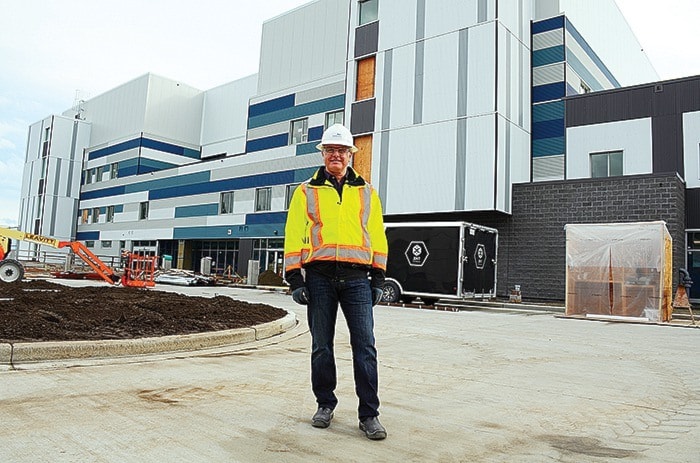Along with the new hospital comes a shift in thinking by Island Health towards keeping people out of the hospital.
The Vancouver Island Health Authority is working towards caring for seniors where they choose to live, keeping kids healthy and supporting people with mental health or addictions issues before they ever need to come to the hospital.
“When I think of health care it’s not just about the nice shiny building that we are building and what we are going to start talking about in Island Health – the conversations we are going to start having in January in this community is about community health and care,” said Pauline Bernard, Campbell River, Courtenay and Comox director at a public health meeting last Thursday.
The redesign of the system will start with building better relationships between people and their family doctor or nurse practitioner so that needs can be more easily identified and services developed to better fit those needs.
“I guarantee you the way forward is not to build more secure rooms or more hospital rooms,” said Dr. Jeff Beselt, executive medical director for VIHA Geography 1.
It helps a little bit, he admitted, “but we have to find a way to support these people so they can still live with their families.”
The new hospital will have 95 beds.
The regional psych ward in Courtenay will have seven.
Both numbers were concerning to people who attended the meeting last week.
Beselt assured the crowd that even though the current hospital has consistently seen more than 95 people over the last year at any given time, one-third of those people did not need to be in the hospital.
In some cases, those people have been seniors who can no longer live alone in their home.
“Our long term goal has been how on Earth do we bend the curve so that people can go from their homes into residential care and not go through a hospital on the way there,” he said.
There has been a similar issue with the psych beds.
Beselt said that a lot of the time people who do not need to be in the psych ward are placed there because no where else is able to properly care for them. But the new hospital was designed so that dementia patients can be properly cared for and supervised while staying in any unit of the building.
Each unit has walking loops, which means they have no dead ends; a patient can wander and end up back where they started. There is also a wandering system. If a patient tries to go somewhere they aren’t allowed to go, an alarm will sound and a caregiver will respond.
The units were also designed with the nursing stations in the middle with access doors painted the same colour as the wall. Doors that patients are allowed to go through are painted contrasting colours.
“Our goal is not to make it a care home and have dementia patients there, but that when dementia patients come in they can be cared for in an appropriate unit to meet their care needs and we don’t have to group them,” said Christina Rozema, site director.
Another highlighted feature of the new hospital is the family birthing rooms.
After consultations with the local First Nations communities, two large family birthing rooms were designed and created for the new hospital.
At the moment, Rozema said the details are starting to go in, the walls are being painted and soon the systems will be tested. The next stage is to teach the staff how they will be working in their new space.
